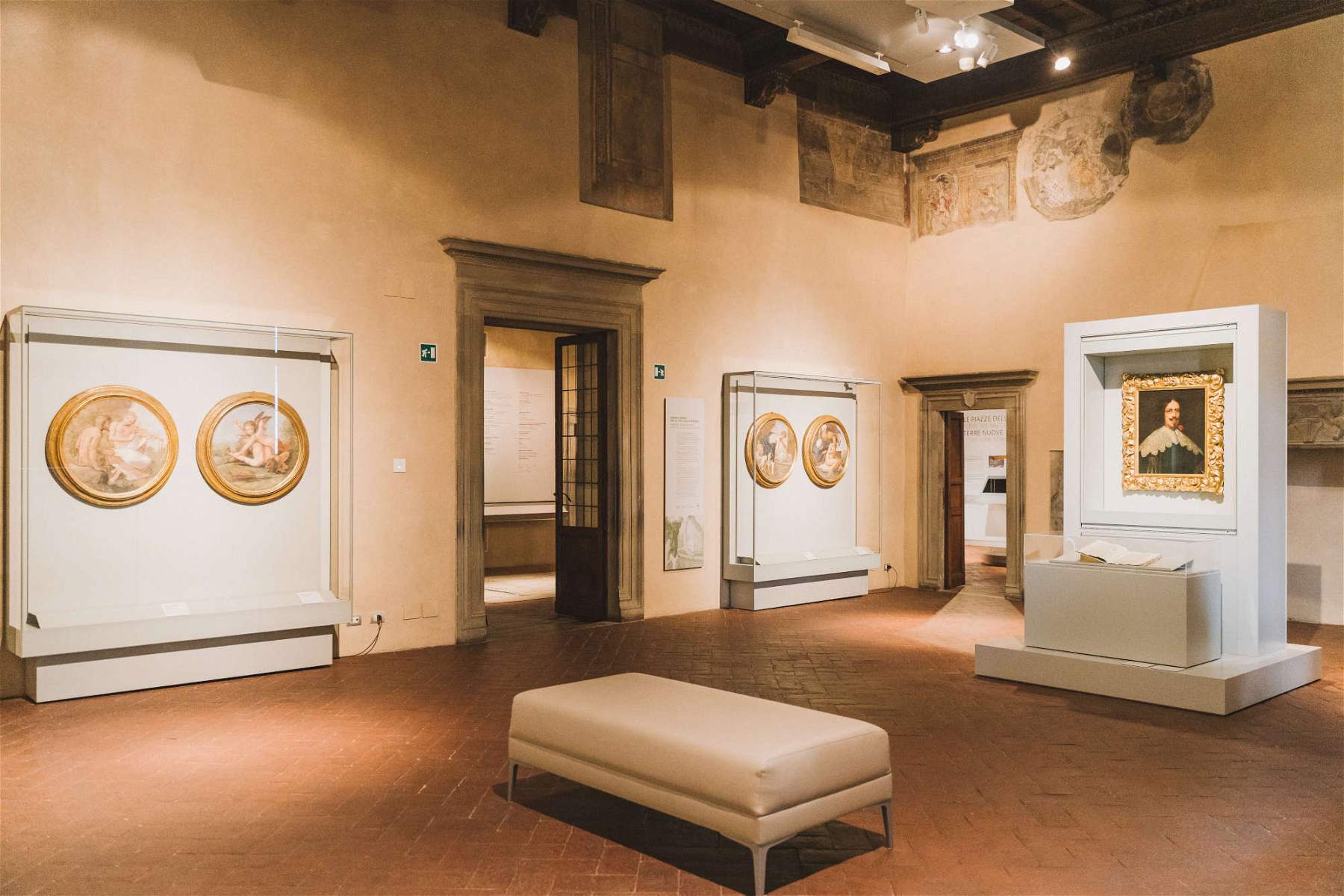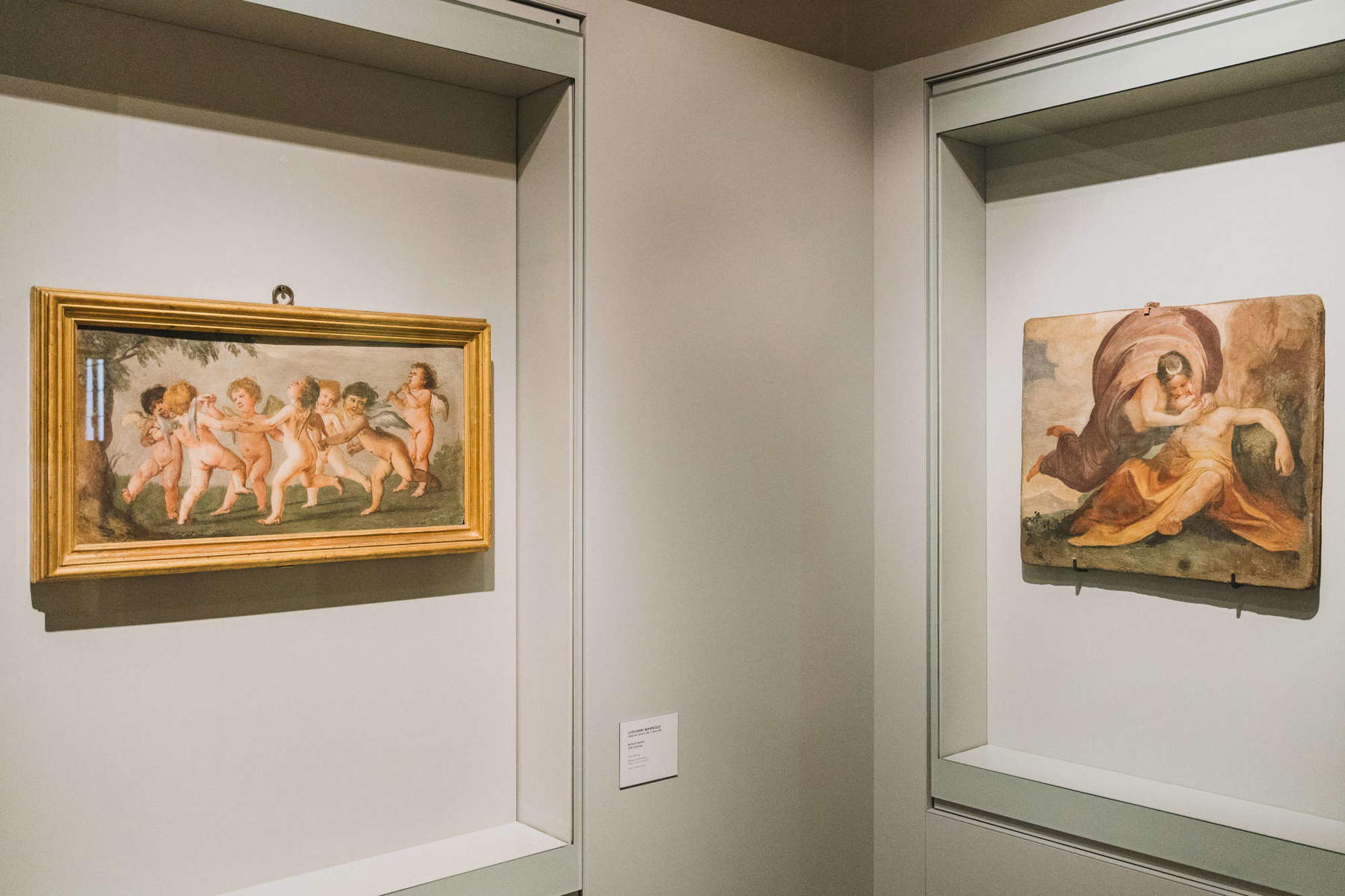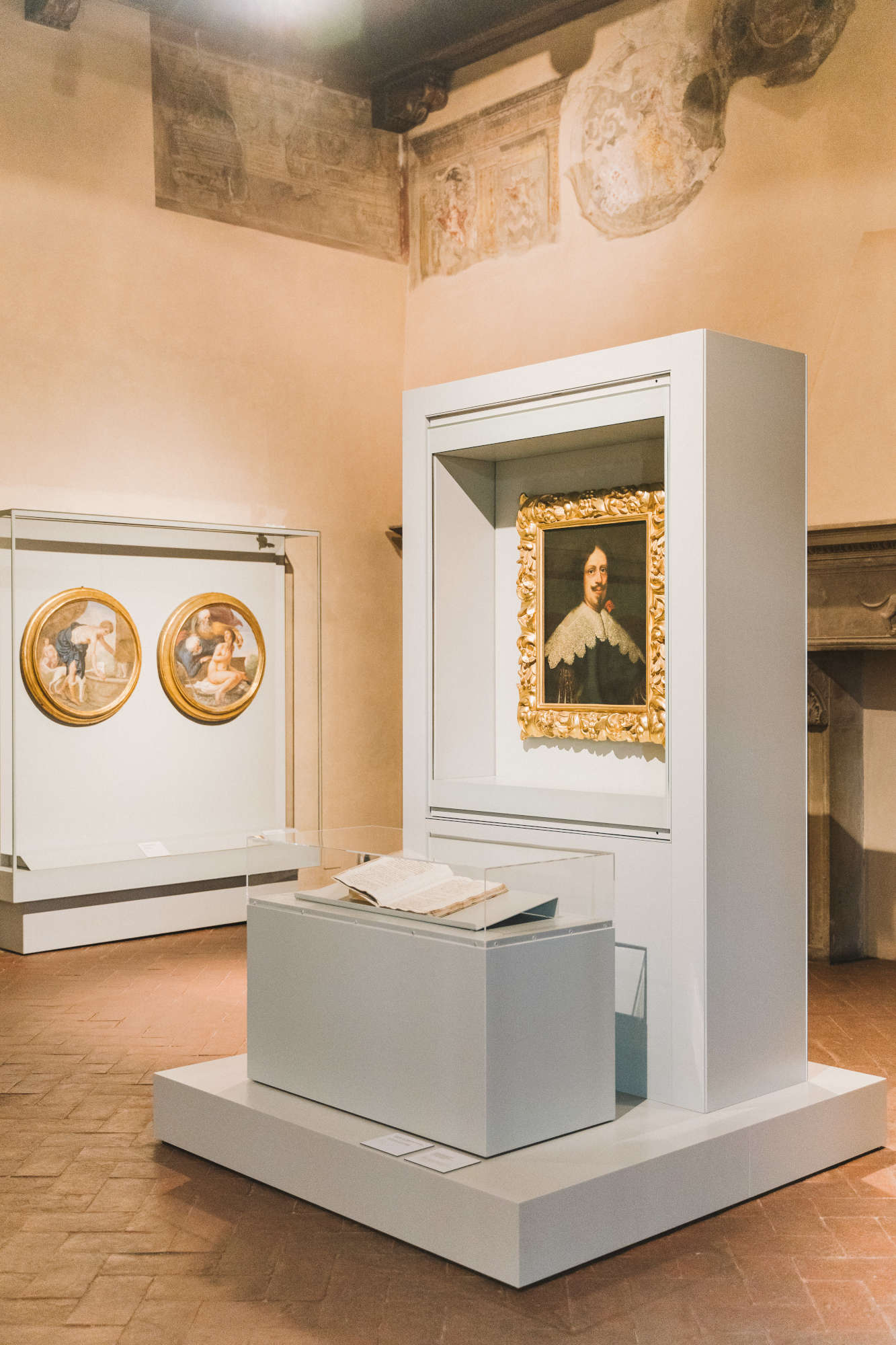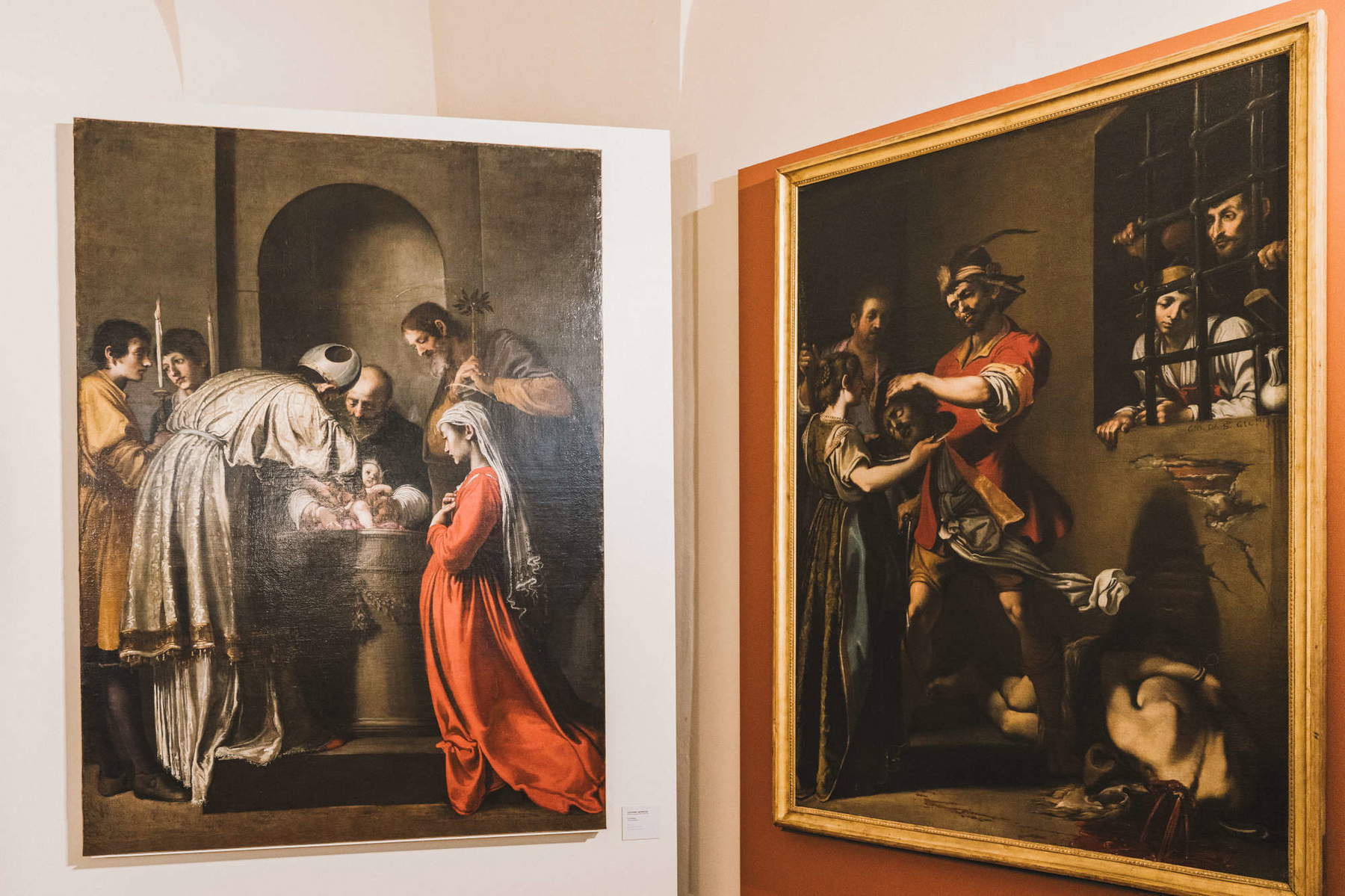One of the most interesting artists of the Tuscan seventeenth century, Giovanni Manozzi known as Giovanni da San Giovanni (San Giovanni Valdarno, 1592 - Florence, 1636) returns home to his Valdarno where he is the protagonist of an exhibition of the Terre degli Uffizi project of Fondazione CR Firenze and the Uffizi diffuse: it is "Bizarre and Capricious Mood. Giovanni da San Giovanni, painter without rule at the Medici court, which runs from Oct. 8, 2023 to March 31, 2024 at the two venues of the Museo delle Terre Nuove and the Museo della Basilica di San Giovanni Valdarno. The exhibition is curated by Silvia Benassai, Cristina Gnoni Mavarelli and Valentina Zucchi and, for the section of the Museum of the Basilica, Michela Martini.
The exhibition is articulated as a journey through the painter’s art through ten tondi paintings on matting and other valuable works from the Uffizi Galleries and other collections. Giovanni da San Giovanni emerges from the panorama of the early seventeenth century for his original neo-Mannerist taste, his synthetic brushstrokes, the freshness of his colors, and his particular flair, so much so that it led Roberto Longhi to speak of proto-Impressionist painting. All this manifests itself to an evident degree in the works in the exhibition, which enhance the innovative and luminous dimension of his painting in a peculiar way.
In addition to the novelty of Giovanni da San Giovanni’s language, the exhibition enhances and highlights his skill in fresco painting on portable media, which earned him great success. Particularly well versed in mural painting, he was in fact appreciated by prestigious patrons, cultivating a special relationship with the Grand Dukes: on a Medici commission Giovanni executed one of his first Florentine works, the lost painting in Piazza della Calza, and his last prestigious undertaking, the decoration of the Sala degli Argenti in Palazzo Pitti, left unfinished due to his untimely death.
It is precisely the relationship between Giovanni da San Giovanni and a member of the Medici family, Prince Don Lorenzo, son of Ferdinando I, that imprints the exhibition: around the portrait of the commissioner by Justus Suttermans, the eight tondi painted in fresco on reed matting for the Villa della Petraia executed around 1634 are exhibited here for the first time in series, flanked by two other tondi executed with the same technique for the Villa of Pratolino. Also ascribed to the same period is the famous fresco painting on embrice exhibited here, depicting Painting Painting Painting Fame . Also presented in the exhibition are two other valuable portable frescoes from private collections and some precious drawings from the Gabinetto Disegni e Stampe of the Uffizi Galleries. A large part of these works draws on the iconography of myth, much loved by the painter and interpreted by him with wit and modernity. This is the case, for example, with the tondo depicting Aurora and Tito, in which the rosy and carefree goddess smilingly observes the sleep of her elderly husband, consumed by fatigue and old age; or that of the tondo of Bacchus and Ariadne, taken as the exhibition’s icon, where the artist emphasizes the cultured reference to the crown given to the maiden by Venus and later transformed into a constellation. Each story, while imbued with pathos, is presented by the painter in a mild, almost suave form, sublimating every dialectic and difficulty in the name of a relaxed, contemplative gaze, befitting the spirit of the Medici patronage.
Related to the works in the Museo delle Terre Nuove is a second section at the Museum of the Basilica of Santa Maria delle Grazie, where additional paintings by Giovanni Mannozzi on sacred subjects are presented, in dialogue with the artist’s works in the museum’s permanent collection. In fact, one of the two lunettes frescoed in 1621 for the Oratory of Santa Maria delle Grazie (the Wedding scene) and one of the painter’s few canvases, the Beheading of St. John the Baptist, signed and dated 1620, are in the collection. The latter will be placed in dialogue with another canvas painted by Mannozzi, namely the Circumcision of St. Bartholomew in Cutigliano, little known to the general public and also dated 1620, and with the preparatory drawing for the painting Martyrdom of St. Blaise, from the Drawings and Prints Cabinet. Also on display will be a valuable work from a private collection, The Canteen of the Poor, and the coat of arms of the Mannozzi family.





“Giovanni Mannozzi also bears in his artistic name-he called himself ’da San Giovanni’-his land, his birthplace,” says Eike Schmidt, director of the Uffizi. “This chrism, despite having frequented the greatest art centers of his time, Florence and Rome, remains fundamental to his identity. The purest sense of the Uffizi project Uffizi diffusi and its extension, Terre degli Uffizi, is to awaken the artistic consciousness of the citizens towards their own glories, their own heritage. No one embodies this value more than Giovanni da San Giovanni, and the return of so many masterpieces to the city from which he left to learn and gather glory elsewhere is a historic event, a celebration for all.”
“I proudly greet,” says Fondazione CR Firenze President Luigi Salvadori, “the last exhibition of the third cycle of this beautiful project that we conceived and promoted together with the most important museum in our country. An initiative that, in three years, has enhanced lesser-known places and collections, helped decentralize tourist flows, and definitely increased attendance at the venues that have hosted a total of 19 temporary exhibitions. Among the many reasons for our satisfaction, I like to add the value for the territory of teamwork between important private and public institutions around a cultural production of absolute importance as this important exhibition event is.”
“For the Municipality of San Giovanni Valdarno,” said Mayor Valentina Vadi, “it is an honor to be part, for the second consecutive year, of Terre degli Uffizi because we have managed to enter, by now in a structural way, into a prestigious regional exhibition circuit conceived and realized by Le Gallerie degli Uffizi and Fondazione CR Firenze, managing to give, finally, a defined exhibition mission to our most relevant, the Museo delle Terre Nuove, and because, undoubtedly, this exhibition dedicated to Giovanni Mannozzi and his links with the Medici patronage will also attract visitors, constituting an important instrument of valorization and promotion for our territory, as already happened for the exhibition dedicated to Masaccio and Beato Angelico. Another aspect that the exhibition enhances is the natural connection with the city of San Giovanni Valdarno and with the works of the same artist preserved here: first of all the paintings kept in the Museum of the Basilica of Santa Maria delle Grazie, which, also in this edition of Terre degli Uffizi, will be part of the overall exhibition project. I would like to thank Le Gallerie degli Uffizi, director Eike Schmidt for the trust granted again to our municipality, I would like to thank Fondazione CR Firenze, the curators of the exhibition who have put together a prestigious scientific project for our city, and all those who have contributed to the organization and realization of this exhibition that constitutes, without a doubt, in 2023 the most important cultural event for our city.”
 |
| Uffizi Diffusi dedicates an exhibition to Giovanni da San Giovanni in his Valdarno |
Warning: the translation into English of the original Italian article was created using automatic tools. We undertake to review all articles, but we do not guarantee the total absence of inaccuracies in the translation due to the program. You can find the original by clicking on the ITA button. If you find any mistake,please contact us.